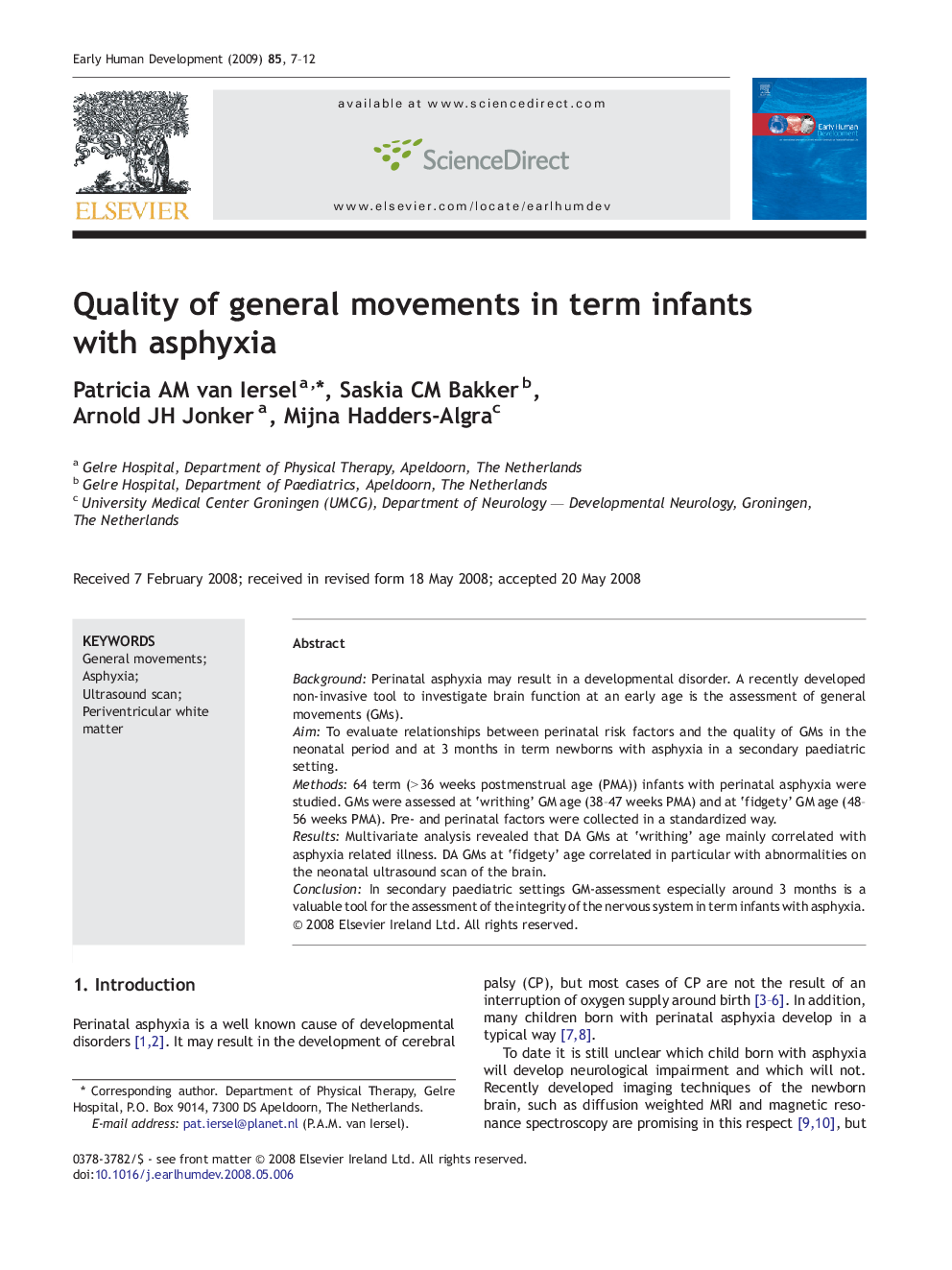| Article ID | Journal | Published Year | Pages | File Type |
|---|---|---|---|---|
| 3917967 | Early Human Development | 2009 | 6 Pages |
BackgroundPerinatal asphyxia may result in a developmental disorder. A recently developed non-invasive tool to investigate brain function at an early age is the assessment of general movements (GMs).AimTo evaluate relationships between perinatal risk factors and the quality of GMs in the neonatal period and at 3 months in term newborns with asphyxia in a secondary paediatric setting.Methods64 term (> 36 weeks postmenstrual age (PMA)) infants with perinatal asphyxia were studied. GMs were assessed at ‘writhing’ GM age (38–47 weeks PMA) and at ‘fidgety’ GM age (48–56 weeks PMA). Pre- and perinatal factors were collected in a standardized way.ResultsMultivariate analysis revealed that DA GMs at ‘writhing’ age mainly correlated with asphyxia related illness. DA GMs at ‘fidgety’ age correlated in particular with abnormalities on the neonatal ultrasound scan of the brain.ConclusionIn secondary paediatric settings GM-assessment especially around 3 months is a valuable tool for the assessment of the integrity of the nervous system in term infants with asphyxia.
